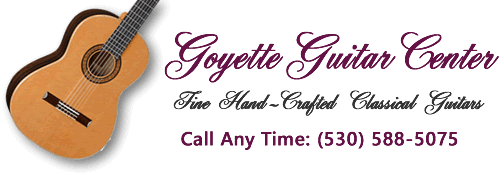Most classical guitarists reach plateaus and temporary dead ends where advancement seems to stall. When this happens, we are tempted to give up and assume that the problem is lack of dexterity and/or talent. What I have learned over the years is that while some obviously have more innate ability than others most of us greatly underestimate our true potential. This is true in all areas of our lives, not just music.
Have you ever noticed that the greatest world-class players seem to effortlessly perform even the most difficult pieces. It seems that they are barely trying and their fingers seem to move over the fretboard rather effortlessly. Notes are produced with great precision and speed, but the hands don’t seem to be moving nearly as fast as one would expect. They perform extremely difficult and lengthy compositions without tiring, even with prolonged use of full bars. The reason they are able to perform so effortlessly is not solely due to their talent, but also to their technique.
There are two keys to improving our guitar playing technique. The first has to do with learning the correct mechanics, and the second has to do with learning the correct way to practice those mechanics.
The best way to learn the correct mechanics is to take lessons, preferably in person rather than over the internet or from books. Here are some tips on the best way to practice those mechanics:
Practice slowly until you master the correct mechanics.
It is better to play slowly and accurately than to play fast and not so accurately. Playing too fast reinforces bad habits. Play as slowly as needed in order to learn the correct technique, even ridiculously slow if necessary. Then gradually increase your speed until you can play accurately at full tempo.
Learn to play correctly one measure at a time.
Learn to play each measure by looking at only the score. Then learn the measure by looking only at your hands. You have not completely learned to play the measure until you can do it each way ten times in a row without making a mistake.
Play as relaxed as possible, and use as little pressure as possible with the left hand.
Press just behind the fret with as little force as possible, barely enough to produce a clean sound.
The best way to memorize the score
is to first learn to play the notes one measure at a time as described above. Then put the measures together with eyes only on the music. Then learn to play the score watching only the hands. Learn to play the piece entirely through, not stopping to correct mistakes. Then go back and practice again the difficult measures one at a time. Then take time to practice the entire score without stopping. Repeat until you can play the entire piece relatively error free. Finally, practice “entering” the piece at the places that normally give you the most difficulty. Try to visualize the score in these places. Then will help you to avoid “memory lapses” when performing the piece in public.
Master one mechanical technique at a time.
Avoid trying to learn new pieces that are way beyond your current skill level. Try to learn new pieces that challenge you in only one or two carefully chosen technical areas. Some of the most beautiful music ever written for the guitar is relatively simple and easy to play for most intermediate level players. You will find it far more enjoyable to play pieces that are within your technical capabilities.

